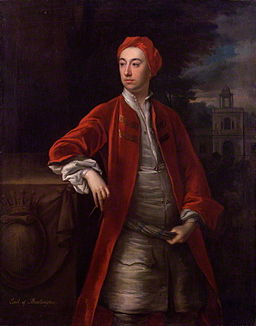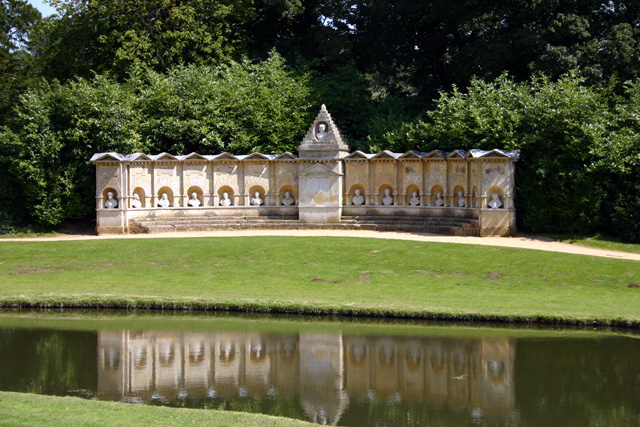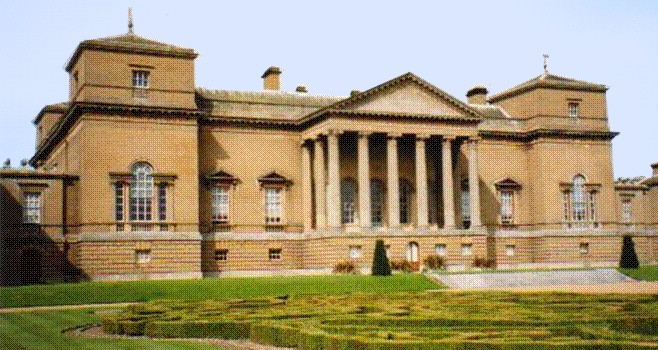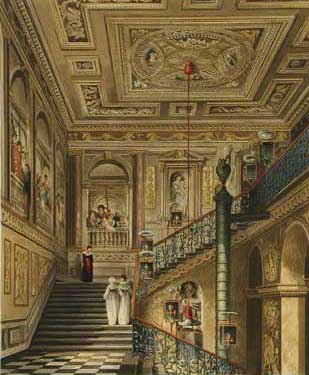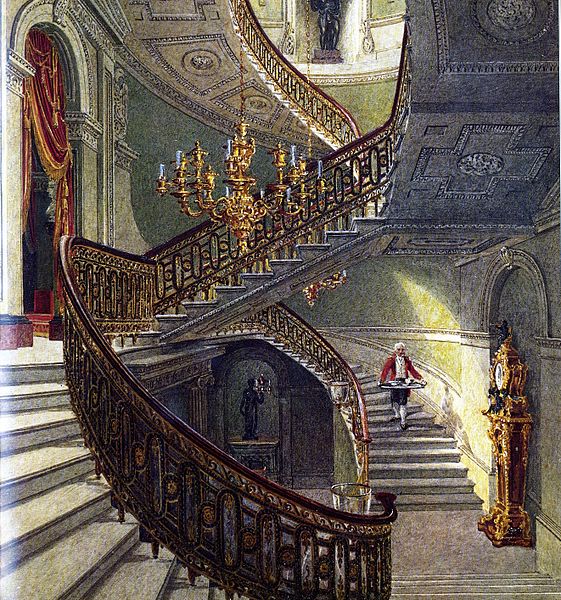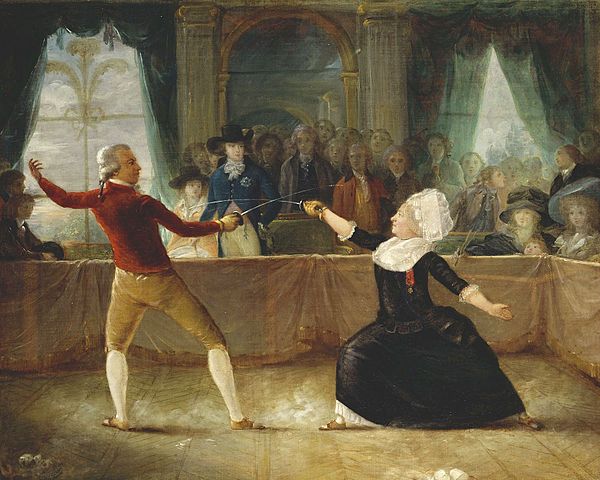William Kent (1685-1748) was an eminent architect, landscape designer, and furniture designer in the early eighteenth century. He was responsible for introducing the Palladian style of architecture as well as the “natural” style of gardening known as the “English landscape garden” into England.
In his first job as a sign and coach painter, Kent showed so much promise that a group of Yorkshire gentlemen provided the financial backing for a Grand Tour, where he painted, studied art, and was inspired by the palaces of Andrea Palladio in Venice. While his painting career did not flourish, he was fortunate to meet Richard Boyle, 3rd Earl of Burlington, “the architect earl,” who eventually assisted him in obtaining many major architectural commissions. After their return to England, the pair got along so well that Kent lived with the Burlington family for thirty years while they pursued their ideals for bringing the classical arts and Palladian architecture to England.
Kent worked on many public, private, and royal architectural commissions, serving as “Principal Painter in Ordinary” to George II from 1723-1748. Holkham Hall (see below) is “the most complete embodiment of Palladian ideals still to be found” (Wikipedia). His beautiful interiors can still be seen at Kensington Palace and Chiswick House, among others.
Landscape architecture
The Grand Tour, specifically Greece and Italy, proved to be the most significant factor in influencing the fine arts in Georgian England.
Kent, with Pliny’s garden in mind, transformed Stowe, Chiswick and Rousham into “landscapes worthy of an idealised pastoral painting by Lorrain.” Philip Southcote said that the Kent-Burlington partnership was responsible for ‘the fine natural taste in gardening.”
Chiswick
In 1733, Kent took the garden at Burlington’s new villa with its Palladian bathing house, Doric column, and Tuscan portico, and added a semi-dome of
clipped yews, to which he relocated antique statues from Hadrian’s villa at Tivoli. Most importantly for the development of the landscape garden, however, was the opening up of vistas in the groves to take in contrived views of the temples, statues and urns. This advance in gardening was received with great acclaim, and soon “No nobleman’s Gardens were thought to be of Taste unless Mr. Kent had dispos’d or planted them.’ English estates quickly filled up with similar classical features, as the upper classes rushed to assert their wealth and cultural authority through their choice of patronage.
Stowe
For his first ever landscape commission in 1731, Kent created the Temple of Venus, for which he painted provocative scenes Edmund Spenser’s Faerie Queen. Cobham, Stowe’s owner, was a leading Whig politician, so for the next several years, Kent embellished the property with political satire. In 1734, he enclosed forty acres of the estate to create the Elysian Fields, where he designed the Temple of British Worthies, which includes busts of famous historical persons such as Elizabeth I and Alfred the Great, and the Temple of Ancient Virtue. Across the water was a view of the Temple of Modern Virtues, with a statue of the decapitated Robert Walpole.
…Kent was primarily employed to soften the rigid formalism of Stowe’s existing grounds, and transformed a disconnected series of garden features into a landscaped Arcadia of glimpsed views. To this end, he thinned the many harsh, axial avenues of trees.
Interestingly, it was Capability Brown who supervised the implementation of Kent’s designs for the Elysian fields, his first major commission. The River Styx “wound its way through a series of irregularly sited buildings and planted groves, furthering the fashion for naturalisation.”
Rousham
The trend toward escapist gardens which idealized “the pastoral bliss of ancient Rome” continued into the 1760’s, in stride with the political dominance of the Whigs. Rousham “is frequently hailed as representing the culmination of Kent’s Arcadian vision.”
The circuit walk at Rousham was a prototype of effective planting. It was designed to reveal different views and buildings in a pictorial fashion, including the Temple of Echo and a suggestively nude statue of Antinous, Hadrian’s boy lover. Arguable, Rousham was predisposed for its transformation into an informal Arcadia as the grounds curved naturally down to the River Cherwell. With its juxtaposition of Augustan values, castellated farm buildings and even a pyramid, Rousham was paving the way for the eclecticism of the Rococco garden. Most importantly, Kent opened out the views across the river y the addition of a Gothick eye-catcher and mill to the countryside opposite. From Rousham, Dormer [General James Dormer, Rousham’s owner]’s gardener John MacClary could enjoy the outward prospect of Carriers, Wagons, Gentlemen’s Equipages, Women riding, men walking.’ The Kentian landscape garden was as much about the enjoyment of outward views as it was an inward looking place of retreat. The fence had been well and truly leapt.
Kent “was a painter, an architect, and the father of modern gardening. In the first character he was below mediocrity; in the second, he was a restorer of the science; in the last, an original, and the inventor of an art that realizes painting and improves nature. Mahomet imagined an elysium, Kent created many.”
Horace Walpole
Source:
Mayer, Laura, Capability Brown and the English Landscape Garden, 2011, Shire Publications Ltd.

